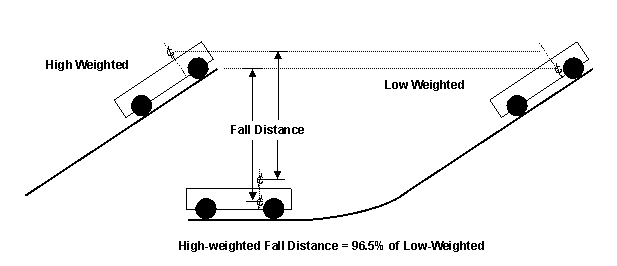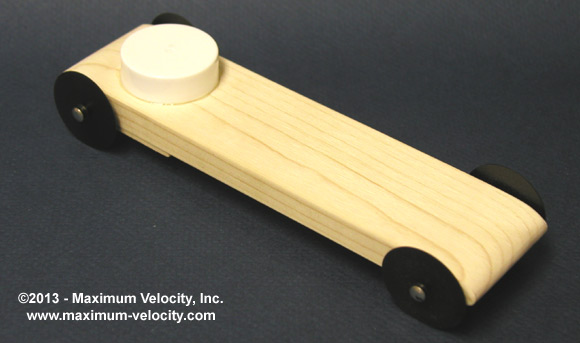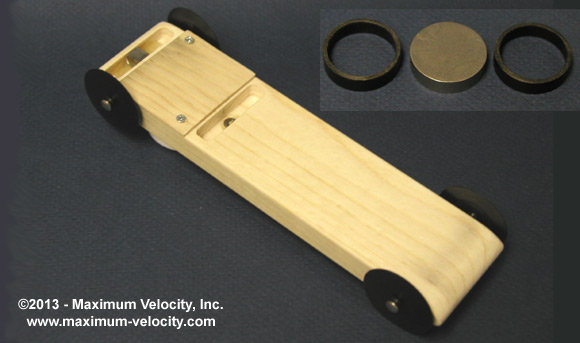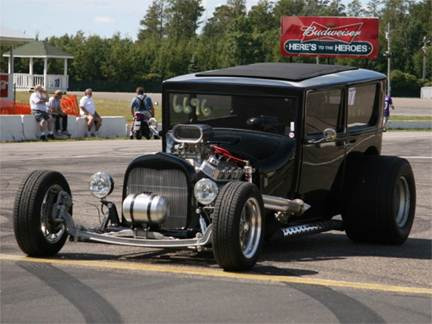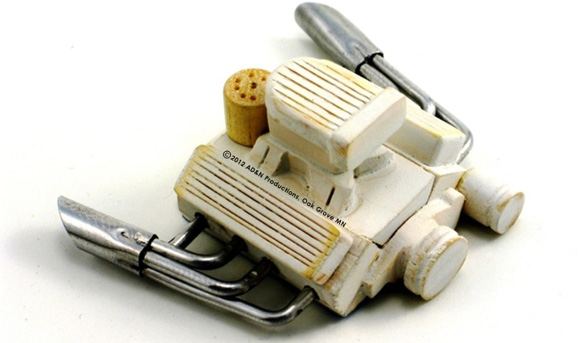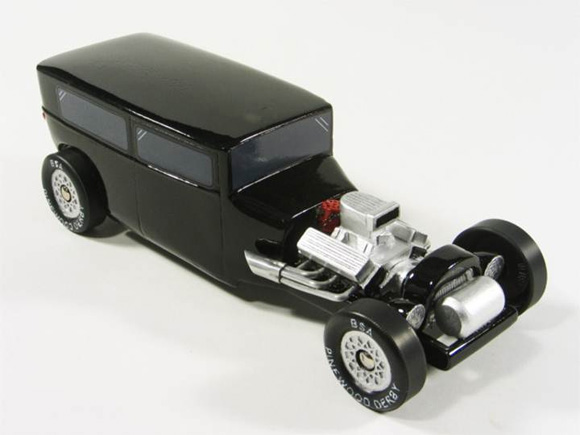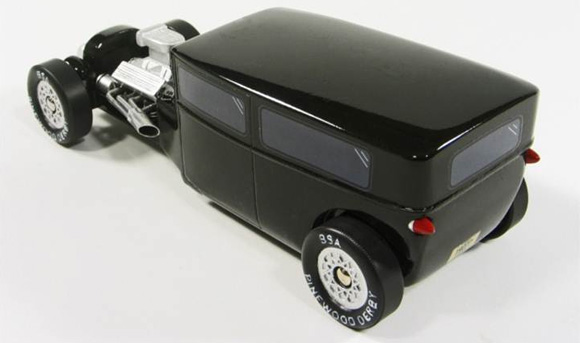Editor's Notes
MV Basic & Wedge Car Kits
 
If you are planning a race and are not required to use a specific kit
type, our MV Basic or Wedge Car Kit are just what you need. These attractively
priced kits are equipped with:
Quality Block - Unlike the blocks provided by some organizations,
our blocks are soft, northwestern pine blocks, cut precisely to 7
inches long, 1-3/4 inches wide, and 1-1/4 inches tall. These
dimensions, as well as the axle slots accurately duplicate the
dimensions of standard pinewood derby blocks from BSA and PineCar. Simple Axle Preparation - Don't worry about filing off flaws, or
losing hub caps. Our Speed Axles have no burrs or crimp marks, and
install without hub caps. With or without polishing, they are ready to
go. We supply five, so you have a spare. Quality Wheels - Forget cheap, out of round wheels. Our MV wheels
are top-quality wheels. You will not be disappointed with the quality
of these wheels.
So, if your organization does not mandate a particular kit type,
consider our MV Basic Car Kits or MV Wedge Car Kits
|
 |
Can We Help?
If we can help you in any way with your pinewood derby project, or if you have any feedback regarding this newsletter, please contact us at: info@maximum-velocity.com
Main Pinewood Derby Site - www.maximum-velocity.com
Mobile Pinewood Derby Site - mobi.maximum-velocity.com
|








